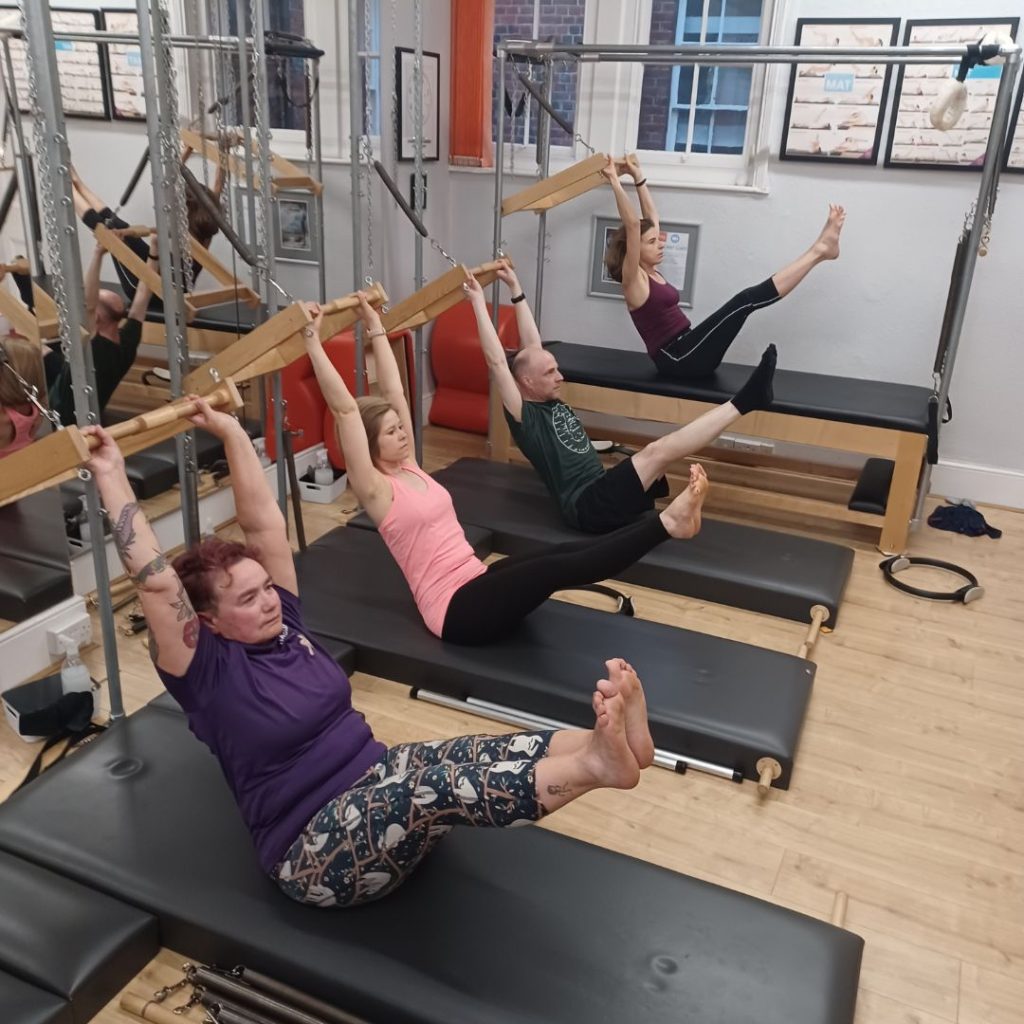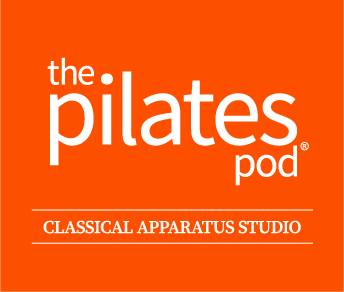
Here are 12 frequently asked questions about Classical Pilates:
1. What is Classical Pilates?
Classical Pilates refers to the original exercises, original apparatus and sequences, developed by Joseph Pilates, taught in a traditional way that incorporates all the apparatus and matwork together that is appropriate for the individual body. The result is not just teaching a list of exercises on the mat or reformer for fun, but a full body conditioning system that gets results.
Trust the method and you will feel the magic that the Pilates method can bring to strengthen the body (both outside and internal core) whilst simultaneously improving flexibility, mobility, stamina, control and posture.
2. What are the key principles of Pilates?
Contrary to popular belief, the key principles of concentration, control, centre, flow, precision, and breathing are not actually principles created by Joe Pilates! They were brought in by others in the later decades but today, these principles are universally accepted as a way to guide the execution of each exercise to maximize effectiveness and safety.
3. Who can benefit from Classical Pilates?
People of all ages, gender and fitness levels can benefit from Classical Pilates. Infact anyone with a spine and joints should be doing Pilates, to continue doing the things in your life that you love doing and care about. Pilates makes life easier and more pleasurable to do; whether it’s lifting weights at the gym with more ease, playing golf or going running with less risk of injury, carrying a child in pregnancy and being able to deliver a baby, having more confidence in your mobility for daily activities as you age… Pilates is the secret.
It’s low impact so it’s particularly helpful for those with weak joints. Its magic is in building and re-connecting you to the deeper muscles of the glutes, inner thighs, deep abdominals, waist, shoulder blades or what we refer to as your ‘powerhouse.’
It connects and integrates your arms and legs into your shoulder and hip sockets and intergrates your limbs into your powerhouse so you move more efficiently, with more ease and less injury. Who wouldn’t want to benefit from all of that?!
4. How is Classical Pilates different from other forms of Pilates?
Classical Pilates adheres to the original exercises and sequences developed by Joseph Pilates. Other forms of Pilates may incorporate contemporary modifications or different fitness techniques so has more of a fitness approach, fashion fad interpretation or just focuses on one aspect like matwork or reformer, instead of the whole picture.
The key thing to look out for is to check your teacher is fully comprehensively trained. This means the training is much more indepth and throughout the whole method Then try contemporary styles and classical styles to see what suits you best but always ensure you’re comparing apples to apples. A dynamic reformer class is not the same as a fully comprehensive Pilates session.
5. Do I need special equipment for Classical Pilates?
While Pilates is meant to be done in the studiuo with the whole suite of apparatus that makes up the Pilates method, from Reformer, Cadillac, Wunda Chair, High Chair, Tower, Spine Corrector, Magic Circles, Barrels and more… the pinnacle of Pilates is doing it unaided with transitions that flow one exercise to another. This is known as Matwork, and was created by Joe Pilates as part of his method so you could practice when you were away from the studio. You can follow our basic matwork on our You Tube page for a daily at home practice.
6. How often should I practice Classical Pilates?
For best results, practicing Pilates 2-3 times per week is recommended. Consistency is key to achieving and maintaining the benefits. Once a week will give you a maintenance feeling, 2-3 times a week will change the body and get your results quicker. But remember matwork at home also counts if you are doing it regularly, and all practice is good- it doesn’t have to be an hour’s workout!
7. Can Classical Pilates help with back pain?
Yes, yes, and yes! Infact it’s what Pilates is so well known for. Classical Pilates can be very effective for alleviating back, neck or joint pain as the root of most pain in these areas is a weakness in the centre (core)
This then leads to compensations elsewhere, changes in the way we move and our posture and this leads to imbalances where some things become too tight whilst others become too weak and that’s when we feel pain.
Pilates is designed to strengthen the centre, address imbalances and help gain stability, strength, control, stretch and stamina for a more optimal
8. Is Classical Pilates suitable for beginners?
Absolutely! BUT, please don’t just jump in the deep end. All Pilates should be taught thoroughly and hands on, so you know what to do and how to find your powerhouse. The apparatus and the exercises should be properly introduced to you at a beginner level, regardless if you have done yoga or a Pilates video before!
Our Intro to Pilates Packages are a great way to introduce you properly. Beginners start with basic exercises to ensure good execution and control, and to ensure you build a solid powerhouse that is the foundation of your body as well as the foundation of the rest of the Pilates method to come. People gradually progress to more complex movements as they gain strength, control and confidence which is why we proudly never rush the basics. What happens to a beautiful looking cake if you take it out the oven and you have rushed the steps or taken it out too earlier?! We don’t want a soggy bottom with a saggy centre 😉
9. How long does it take to see results from Classical Pilates?
Results can vary, but many people start to feel the magic after just a couple of 1:1’s! The apparatus gives you that instant feeling of being able to connect with muscles that you thought were lost! Improvements in strength, flexibility and mobility start after a few weeks of consistent practice. Noticeable physical and postural changes often after a couple of months.
10. What should I wear to a Classical Pilates class?
Wear comfortable, form-fitting clothing that allows for a full range of motion. Avoid baggy clothes that might hinder movement or get caught in the equipment. Barefoot or non-slip grip socks are usually recommended. But essentially, be comfortable and be prepared to move.
11. Can I do Classical Pilates if I’m pregnant?
Yes, but always with proper modifications and guidance from a qualified instructor. Pilates can be safe and extremely beneficial during pregnancy for supporting the huge changing demands on the body and assisting with the delivery of baby. Always consult your doctor before starting any new exercise routine and always ensure your Pilates teacher is adequately trained in pre postnatal, sees you for 1:1 first or you attend specialist pregnancy Pilates.
12. How do I find a qualified Classical Pilates instructor?
Look for instructors certified by reputable Pilates organizations that emphasise Classical Pilates training. The Pilates Teacher Association in UK, Pilates Method Alliance USA are good places to check directories.
Personal recommendations, reviews, and intro packages can also help you find a good fit.
